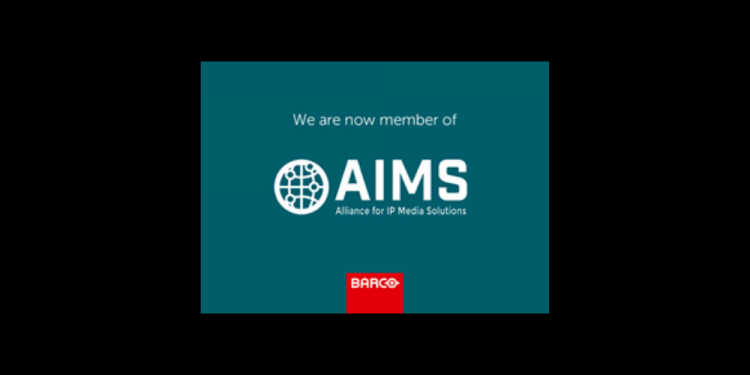Barco, a global leader in visualization and image processing technologies, is a new member of the Alliance for IP Media Solutions (AIMS). With AIMS’ new Internet Protocol Media Experience (IPMX) set of open standards and specifications gaining traction in the Pro AV industry, the Barco membership ties in with the company’s perspective and roadmap in terms of AV-over-IP solutions.
AIMS is an industry consortium founded and led by leading AV companies dedicated to promoting the adoption, standardization, development, and refinement of open industry standards for the broadcast and media industries as they transition from SDI to IP.
Witnessing the growing value of IP in AV environments, Barco and AIMS share the same vision on IPMX being the only open standard that eventually replaces the many different proprietary protocols. They believe IPMX addresses the Pro AV industry’s need for a single set of common, ubiquitous standards-based protocols that ensure interoperability for AV-over-IP.
“Built on the collaborative effort of hundreds of leading companies, the IMPX open standard is designed to be the technology that manufacturers, integrators, and end-users need to achieve truly engaging IP media experiences,” said Samuel Recine, chair of the AIMS Pro AV Working Group. “We’re so pleased to welcome a key member such as Barco to the alliance and get their support in the industry’s migration to AV-over-IP.”
As the new associate of the Alliance for IP Media Solutions, Barco agrees to work together in educating the industry on the benefits of the IPMX open standards and fostering its adoption.
“At Barco, we’ve been committed for many years to the early adoption of open signal standards to enable interoperability in our products and greater operational flexibility for our image processing end-users,” says Robbie Bruce, Image Processing Product Management Director at Barco. “Joining the alliance is a showcase of our engagement towards a future-proof AV-over-IP roadmap with innovative solutions in line with the open IPMX standards approach.”
















